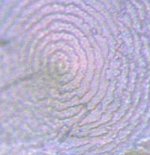S
Slraep
Guest
I didn't realize the Cooks were giving Tahiti that serious a run for their black pearl money. Fiji? Fiji? Don't know if I should feel so sorry for the Cooks pearl farmer any more I think it is the fallen status of the Tahitian black pearl more than anything else, that is causing these problems. You just can't spin-market enough to hide the fact that every corner jeweller now has as pretty much as many Tahitians as akoyas.
I think it is the fallen status of the Tahitian black pearl more than anything else, that is causing these problems. You just can't spin-market enough to hide the fact that every corner jeweller now has as pretty much as many Tahitians as akoyas.
http://www.pacificmagazine.net/news/2008/04/07/eu-funds-study-to-help-ailing-black-pearl-industry
"The European Union has earmarked some US$5.8 million as part of a plan to reform and boost French Polynesia's ailing black pearl industry, Maritime Resource Minister Keitapu Maamaatuaiahutapu announced late last week. The scheme is part of the EU's 9th EDF (European Development Fund), which initially covered the 2002-2007 period, Maamaatuaiahutapu told reporters. The project, which is scheduled to run over a three-year period from 2008 to 2010), involves on-site training by roving experts for black pearl farmers, with a particular focus on quality control and productivity. Another facet of the project concerns a survey on the state of the international market opportunities for French Polynesian black pearls. Once completed, the survey would give rise to recommendations on how the industry, which has been facing tough competition from neighboring Cook Islands and even Fiji, should rethink its international marketing strategy"
Slraep
http://www.pacificmagazine.net/news/2008/04/07/eu-funds-study-to-help-ailing-black-pearl-industry
"The European Union has earmarked some US$5.8 million as part of a plan to reform and boost French Polynesia's ailing black pearl industry, Maritime Resource Minister Keitapu Maamaatuaiahutapu announced late last week. The scheme is part of the EU's 9th EDF (European Development Fund), which initially covered the 2002-2007 period, Maamaatuaiahutapu told reporters. The project, which is scheduled to run over a three-year period from 2008 to 2010), involves on-site training by roving experts for black pearl farmers, with a particular focus on quality control and productivity. Another facet of the project concerns a survey on the state of the international market opportunities for French Polynesian black pearls. Once completed, the survey would give rise to recommendations on how the industry, which has been facing tough competition from neighboring Cook Islands and even Fiji, should rethink its international marketing strategy"
Slraep
Last edited by a moderator:

